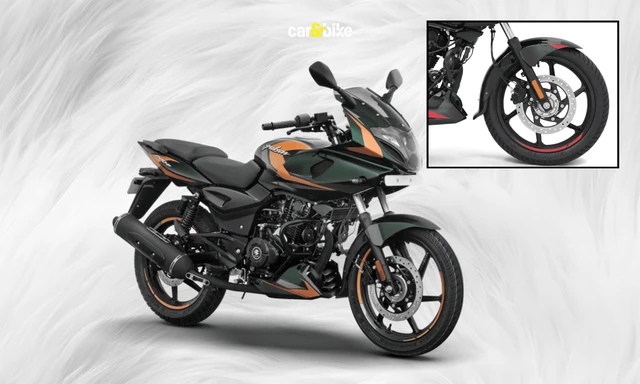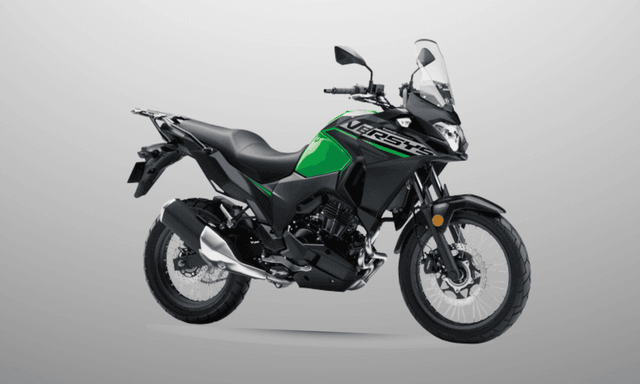What You Need To Know About The Different Drive Belts In Your Car

- Timing have a high level of mechanical efficiency of up to 98%.
- Serpentine belts use heavy-duty grade rubber
- V-belts are only restricted to a couple of engine components.
With a number of different parts in a vehicle, it is practically impossible to know about them all. Drive belts are one of the lesser-known parts of cars and vehicles. This article will introduce the different mechanical belts in cars and discuss them in-depth. Let's get started!
Serpentine Belt
The serpentine belts are multi-v, poly-v, multi-rib, or drive belts. This belt is a snake-like winding belt that wraps around several engine components. The strap is also responsible for powering the alternator, radiator fan, steering pump, and AC compressor.
Serpentine belts use heavy-duty grade rubber that lasts longer than other materials.
Pros
- Serpentine belts are space-efficient that are well-suited for compact engine forms.
- These belts are readily available and do not require multiple disassembles.
- Moreover, the belts are self-adjusting, and you do not have to treat them with manual adjustment.
Cons
- Since this belt powers several engine components, there is a high risk of failure.
- A loose belt can drastically affect the components powered through the serpentine belt.

Photo Credit: : https://en.wikipedia.org/wiki/Serpentine_belt
V-Belt
V-belts also go by the name of wedge-type belts. They get this name owing to its trapezoidal shape. Moreover, the straps derive power from the engines. Unlike serpentine belts, V-belts are only restricted to a couple of engine components.
V-belts replaced flat belts as these were more efficient. It is worth mentioning that this belt has a high load pulling capacity.
Pros
- As compared to the serpentine belts, the V-belts are shorter.
- V-belts are not overloaded with several components. As a result, the chances of failure are significantly lesser.
- Since V-belts power only a few components, other components won't be affected if a single belt fails.
Cons
- Serpentine belts are gradually replacing V-belts in most vehicles. Owing to this, finding a V-belt can be tricky and expensive.
- A loose V-belt can adversely affect the component it powers.
- Most V-belts in the car fail at the same time. So, the vehicle has to undergo heavy repairs at times.

Photo Credit: https://www.my-cardictionary.com
Timing Belt
Gilmer belt or crankshaft belt are other names for the timing belt. This belt performs the function of syncing the cylinder and valves with crankcase and pistons. However, the belt is not visible in the engine bay. This belt hides behind the engine covers.
Pros
- The best part about the timing belts is that they have a high level of mechanical efficiency of up to 98%.
- Timing belts have a lesser chance of significant damage to the pistons and valves.
Cons
- A malfunctioning or failed timing belt can lead to a catastrophe in the engines.
- An out of sync belt can hamper the valve and piston timings.

Photo Credit: https://resource-center.meineke.com
And that was all you needed to know about the different drive belts in cars! We hope you enjoyed reading about them!
Trending News
 1 min readTriumph Tracker 400 Unveiled in UK
1 min readTriumph Tracker 400 Unveiled in UK
Latest News
 Jafar Rizvi | Dec 17, 2025Updated Bajaj Pulsar 220F Does Not Get Dual-Channel ABS; Company Issues ClarificationBajaj Auto has confirmed that the updated Pulsar 220F does not feature dual-channel ABS, contradicting earlier reports.1 min read
Jafar Rizvi | Dec 17, 2025Updated Bajaj Pulsar 220F Does Not Get Dual-Channel ABS; Company Issues ClarificationBajaj Auto has confirmed that the updated Pulsar 220F does not feature dual-channel ABS, contradicting earlier reports.1 min read Janak Sorap | Dec 16, 2025Triumph Tracker 400 Unveiled in UKBased on the Speed 400’s platform with the tune from the Thruxton 400.1 min read
Janak Sorap | Dec 16, 2025Triumph Tracker 400 Unveiled in UKBased on the Speed 400’s platform with the tune from the Thruxton 400.1 min read car&bike Team | Dec 16, 2025Kawasaki Versys-X 300 Offered With Rs 25,000 DiscountAfter the discount, the entry-level Kawasaki Adventurer tourer is priced at Rs 3.24 lakh (ex-showroom).3 mins read
car&bike Team | Dec 16, 2025Kawasaki Versys-X 300 Offered With Rs 25,000 DiscountAfter the discount, the entry-level Kawasaki Adventurer tourer is priced at Rs 3.24 lakh (ex-showroom).3 mins read car&bike Team | Dec 16, 20252026 MG Hector Prices, Variant-Wise Features ExplainedThe updated Hector is sold in 5 trim levels - Style, Select Pro, Smart Pro, Sharp Pro, Savvy Pro.2 mins read
car&bike Team | Dec 16, 20252026 MG Hector Prices, Variant-Wise Features ExplainedThe updated Hector is sold in 5 trim levels - Style, Select Pro, Smart Pro, Sharp Pro, Savvy Pro.2 mins read Janak Sorap | Dec 16, 2025Yamaha R3 and MT-03 Discontinued in India; Here’s WhyThe motorcycles had revied around a price revision of more than a lakh earlier this year, followed by additional discounts due to GST reform, and yet have failed to secure any momentum.1 min read
Janak Sorap | Dec 16, 2025Yamaha R3 and MT-03 Discontinued in India; Here’s WhyThe motorcycles had revied around a price revision of more than a lakh earlier this year, followed by additional discounts due to GST reform, and yet have failed to secure any momentum.1 min read Jaiveer Mehra | Dec 15, 2025Mahindra XUV 7XO Interior Previewed Ahead Of Debut; Triple Screen Layout ConfirmedNew teaser video provides a glimpse at the facelift XUV 700’s cabin and confirms some of the features.1 min read
Jaiveer Mehra | Dec 15, 2025Mahindra XUV 7XO Interior Previewed Ahead Of Debut; Triple Screen Layout ConfirmedNew teaser video provides a glimpse at the facelift XUV 700’s cabin and confirms some of the features.1 min read
 Janak Sorap | Dec 11, 2025Harley-Davidson X440 T First Ride Review: Smarter and SharperHarley-Davidson has taken the X440 and given it a more focused and engaging twist. The result is the X440 T—essentially the same platform but updated in areas that give the motorcycle more appeal and riders more thrill.5 mins read
Janak Sorap | Dec 11, 2025Harley-Davidson X440 T First Ride Review: Smarter and SharperHarley-Davidson has taken the X440 and given it a more focused and engaging twist. The result is the X440 T—essentially the same platform but updated in areas that give the motorcycle more appeal and riders more thrill.5 mins read Shams Raza Naqvi | Dec 10, 20252025 Mini Cooper Convertible Review: More Colour On Indian RoadsThe updated Mini Cooper Convertible is set to be launched in the Indian market in the next few days. We drive it around Jaisalmer for a quick review.1 min read
Shams Raza Naqvi | Dec 10, 20252025 Mini Cooper Convertible Review: More Colour On Indian RoadsThe updated Mini Cooper Convertible is set to be launched in the Indian market in the next few days. We drive it around Jaisalmer for a quick review.1 min read Bilal Firfiray | Dec 8, 2025Tata Sierra Review: India’s New Favourite?Marking its return after a few decades, the reborn Sierra has made everyone sit up and take notice. But is it worth the hype?10 mins read
Bilal Firfiray | Dec 8, 2025Tata Sierra Review: India’s New Favourite?Marking its return after a few decades, the reborn Sierra has made everyone sit up and take notice. But is it worth the hype?10 mins read Girish Karkera | Dec 4, 20252026 Honda Prelude First Drive: Domesticated Civic Type RA sporty-looking coupe built to give customers a taste of performance but not at the expense of everyday practicality.5 mins read
Girish Karkera | Dec 4, 20252026 Honda Prelude First Drive: Domesticated Civic Type RA sporty-looking coupe built to give customers a taste of performance but not at the expense of everyday practicality.5 mins read Seshan Vijayraghvan | Nov 29, 2025Mahindra XEV 9S First Drive Review: Big Electric SUV, Bigger ExpectationsThe XEV 9S lands at a time when the EV crowd is growing fast. It’s a big, born-electric, three-row SUV that starts under 20 lakh. It sits close to the XUV700 in size, but the brief is very different. Here’s what it’s like on the road.11 mins read
Seshan Vijayraghvan | Nov 29, 2025Mahindra XEV 9S First Drive Review: Big Electric SUV, Bigger ExpectationsThe XEV 9S lands at a time when the EV crowd is growing fast. It’s a big, born-electric, three-row SUV that starts under 20 lakh. It sits close to the XUV700 in size, but the brief is very different. Here’s what it’s like on the road.11 mins read
































































































































